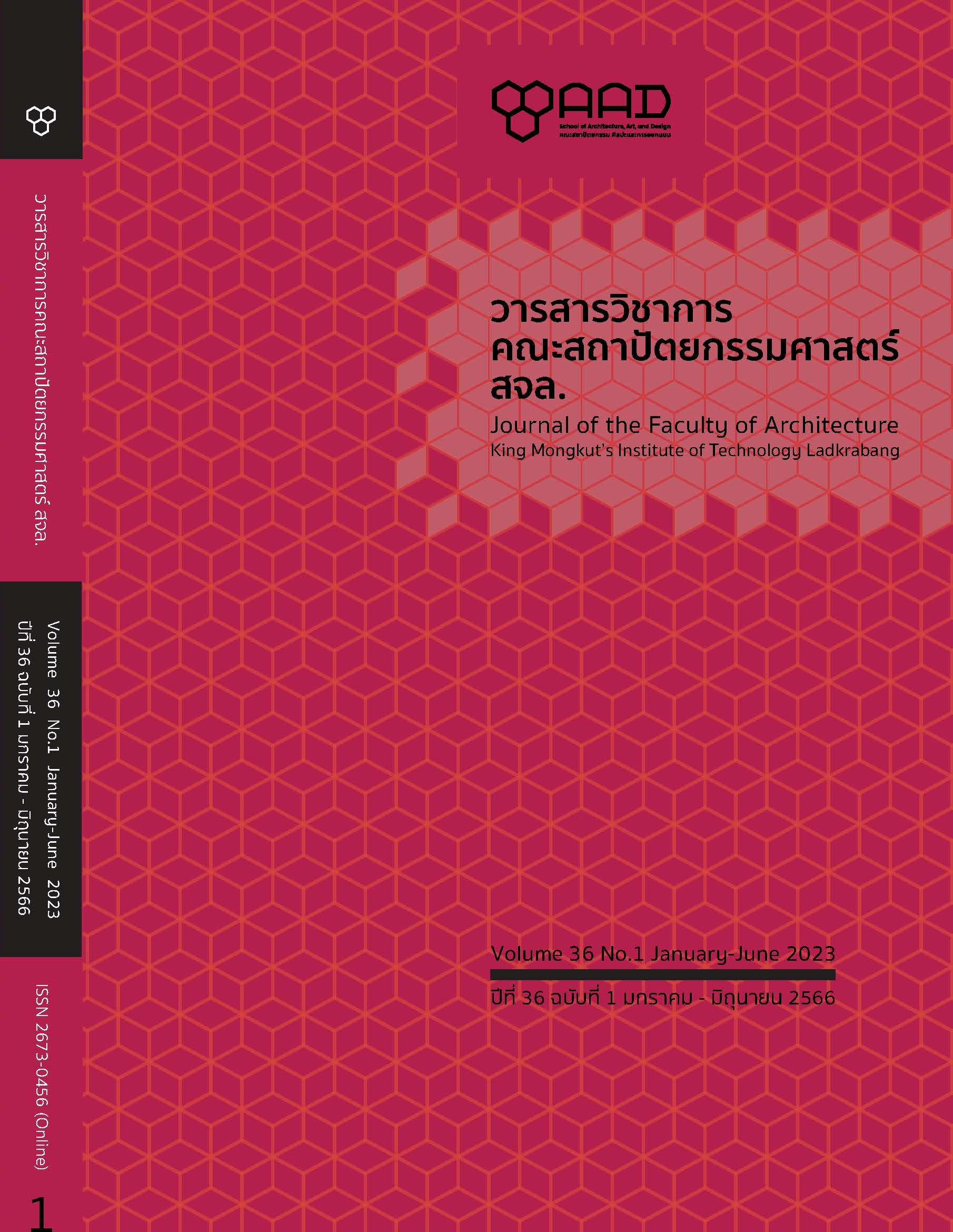Production Design in Environmental Film, A case Study: Sea’s Still Blue
Main Article Content
Abstract
This is the research of Production Design in Environmental Film Case Study : Sea’s Still Blue. The objectives of this study are to 1) Study the production design of "Sea's Still Blue" which is an environmental film that reflects the depletion of marine resources in Khung Kraben Bay, Chanthaburi Province, 2) design movie production to be beautifully and suitably realistic, as well as insert ideas about environmental concerns, and 3) assess audience’s opinions or reactions to this film.
The processes of this study are divided into two parts. The first part is the creative research aspect, in which the researcher is in charge of film production design which includes a study of the script and environmental concerns in Thailand's sea, as well as a study of the design of environmental filmmaking. In addition, the directors, cinematographers, and on-location personnel were interviewed in order to develop design concepts. This part also includes the preparation prior to shooting and the completion of filming. This film was screened at the Mega Cineplex. Part 2 of the research involves assessing the design using a qualitative research method by interviewing 18 audiences (aged 18 - 24 years) who are familiar with production design.
The production design in the environmental film "Sea’s Still Blue" emphasizes three key points; 1) story-based realism, which must be the result of data collection and design creation and be as relevant to the information as possible; 2) beauty of the movie , which use elements of design to create aesthetics and be appropriate for a drama-romance story, 3) insertion of environmental issues by using visual design elements to communicate as symbolics connected to the theme of the screenplay.
The assessment results of design and construction work in four areas are as follows: 1) communication aspect: be able to communicate stories on average 100%; 2) realism aspect: be able to make a movie believable on average 100%; 3) emotional aspect: be able to create an average of 90.6% emotional response based on the story; 4) conceptual aspect: be able to reflect the film's concept on average 83.3% . According to the evaluation, the production design of "Sea's Still Blue" is in good condition.
The study found that 1) Film Genre is very important in determining design guidelines. Because the film genre covers the concept of the screenplay. Scene Design Guidelines props, clothing, and movie tones. This is often something that creative designers overlook. 2) Researching and matching design information It is an important function to bring realism to the scene which affects the performance. And all of them will make the audience believe in that situation. 3) The idea of environmental issues is something that the production designer has to symbolize from the screenplay, such as the end of a dugong statue, which shows that the area. This dugong fish has gone extinct. which viewers can understand this sign Therefore, it can be seen that the production designer must also have knowledge and understanding of semiotics.
Article Details

This work is licensed under a Creative Commons Attribution-NonCommercial-NoDerivatives 4.0 International License.
This work is licensed under a Creative Commons Attribution-NonCommercial-ShareAlike 4.0 International License.
Copyright Transfer Statement
The copyright of this article is transferred to Journal of The Faculty of Architecture King Mongkut's Institute of Technology Ladkrabang with effect if and when the article is accepted for publication. The copyright transfer covers the exclusive right to reproduce and distribute the article, including reprints, translations, photographic reproductions, electronic form (offline, online) or any other reproductions of similar nature.
The author warrants that this contribution is original and that he/she has full power to make this grant. The author signs for and accepts responsibility for releasing this material on behalf of any and all co-authors.
References
แข มังกรวงษ์. (2562). แนวทางการสร้างสรรค์เนื้อหาสื่อเพื่ออนุรักษ์สิ่งแวดล้อม : ยังคงสีคราม. วารสารวิชาการคณะสถาปัตยกรรมศาสตร์ สจล.. 28(1), 96-107.
ไพบูลย์ เติมสมเกตุ, บุญเอื้อ บุญฤทธิ และทินพันธุ์ นาคะตะ. (2560). การอนุรักษ์สิ่งแวดล้อมชายฝั่งอ่าวไทย: กรณีศึกษา จังหวัดระยอง และจังหวัดจันทบุรี. วารสารเกษมบัณฑิต. 18(1), 97-105.
สำนักงานคณะกรรมการพิเศษเพื่อประสานงานโครงการอันเนื่องมาจากพระราชดำริ. (2563). ศูนย์ศึกษาการพัฒนาอ่าวคุ้งกระเบนอันเนื่องมาจากพระราชดำริ จังหวัดจันทบุรี. เข้าถึงได้จาก: http://www.rdpb.go.th/th/Studycenter
De Roo, L. (2016). The Four Elements of Ecocinema A Phenomenological Approach to Cinematic Aesthetics. Sydney: Department of Philosophy, Faculty of Arts, Macquarie University.
Friedman, L. D., Desser, D., Kozloff, S., Nochimson, M. and Prince, S. (2013). An Introduction to Film Genres. New York: W.W.Norton & Company.
LoBrutto, V. (2002). The Filmmaker's Guide to Production Design. New York: Allworth Press.
Olson, R. (1993). Art Direction for Film and Video. Boston: Focal Press.


